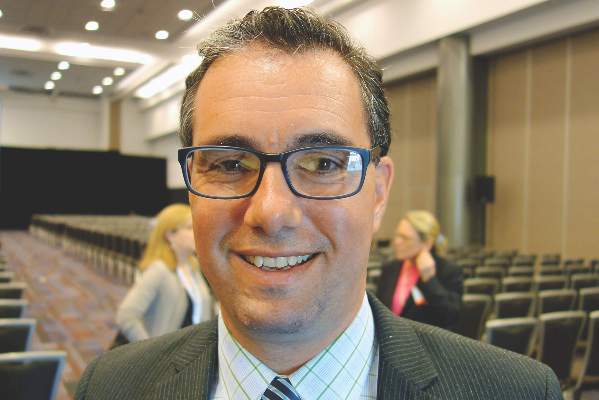AT THE AAN 2016 ANNUAL MEETING
VANCOUVER (FRONTLINE MEDICAL NEWS) – Clemastine fumarate (Tavist) reduced delay in visual evoked potentials by 1.9 ms per eye, with a trend toward improved low contrast visual acuity, in a small randomized, placebo-controlled trial of patients with multiple sclerosis and chronic, stable optic neuropathy.
An improvement in visual evoked potential (VEP) transmission delay, the time for signal transmission from the retina to the visual cortex, was considered a marker of myelin repair. To be included in the study, participants had to have a transmission delay of at least 118 ms in one or both eyes
The idea was to assess the remyelination potential of clemastine in patients with multiple sclerosis (MS) and chronic optic neuropathy. “While the improvement in [VEP] appears modest, this study is promising because it is the first time a drug has been shown to possibly reverse the damage done by MS. This study provides a framework for future MS repair studies,” said Dr. Ari Green, assistant clinical director of the University of California, San Francisco (UCSF) Multiple Sclerosis Center.
“We certainly wouldn’t promote this for clinical use, but it’s a promising indication that there’s a potential for remyelination” in MS. “We need to further investigate this,” he said at the annual meeting of the American Academy of Neurology.
A total of 50 patients were randomized to oral clemastine 4 mg twice daily or matched placebo for 3 months, then switched to the opposite arm for 2 months. The dosage was a bit higher than that typically used in adults for allergic disease.
The VEP improvement persisted even when clemastine patients were switched to placebo, which suggests “we were having a remyelinating effect, not just a transient effect on ion channels,” Dr. Green said.
Patients were 40 years old, on average, with mean disease duration of 5 years and mean Expanded Disability Status Scale score of 2.1. They had to have had a bout of optic neuropathy within the previous 5 years, but not within the previous 6 months. They were allowed to stay on their disease-modifying therapies while in the study. Clemastine was associated with mild worsening of fatigue.
Previous studies at UCSF suggest that clemastine is one of several antimuscarinic agents that can induce oligodendrocyte precursor cells (OPC) into mature, myelin-producing cells, which might help account for the findings. The next step in the work is to see how well longer dosing works, and how well clemastine works in acute optic neuropathy. The team also wants to test stronger OPC inducers.
The University of California, San Francisco, funded the work. Dr. Green is an adviser for Bionure, Mylan Pharma, MedImmune, Inception 5, and Novartis, and receives research support from Novartis.
aotto@frontlinemedcom.com



